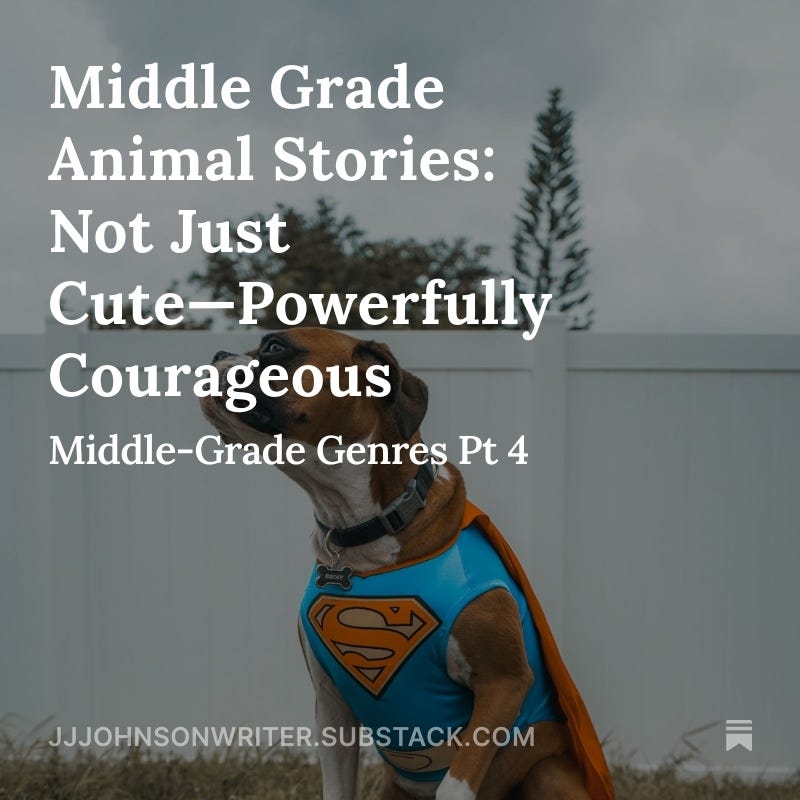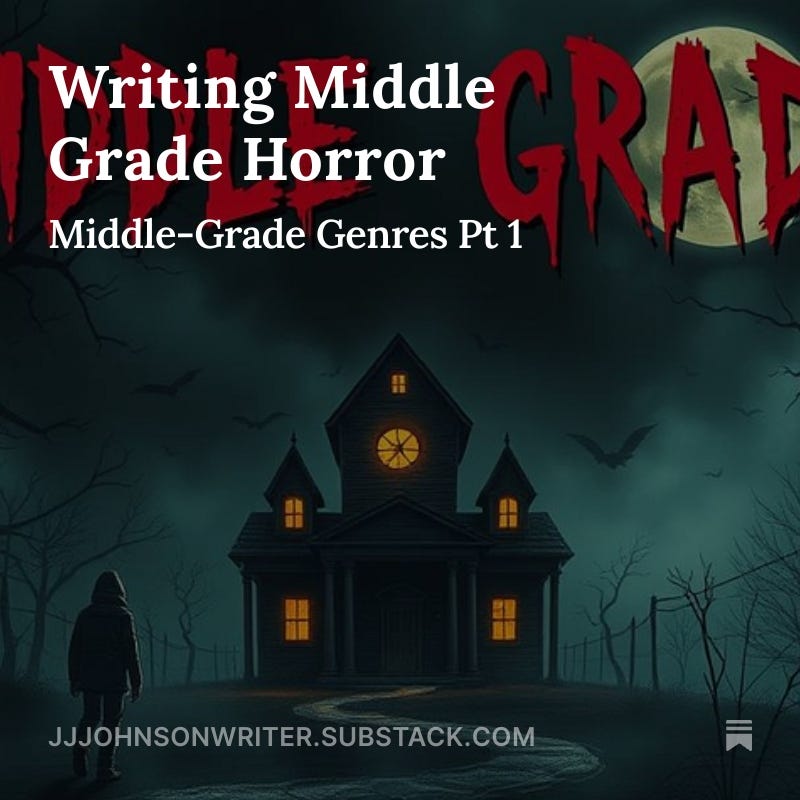Middle Grade Adventure & Survival Stories: Not About Danger—About Discovery
Middle-Grade Genres Pt 5
And we’re back with part five in our Middle-Grade Genre series. So, let’s do a quick recap of what we have hit so far.
We’ve covered horror, fantasy, science fiction, and animal stories— you can find links to each of those post at the bottom. But there’s another category that deserves just as much respect, and maybe even more admiration: Middle Grade adventure and survival stories. These are the books that drop a kid into the wild— sometimes literally— and ask the question: What are you made of?

I'll be honest, these were my favorite types of stories as a kid. I was completely drawn to the idea of surviving with nothing but a pocket knife, a canteen of water, and pure instinct. No adults. Just me, a dog for moral support, and maybe a granola bar if I was lucky.
Adventure stories don’t need dragons or dystopias or spooky shadows to keep readers turning pages. They’ve got stakes. Real ones. A cracked compass. A lost trail. An incoming storm. An empty stomach. And yet, these stories are never just about survival in the physical sense.
They’re about resilience. Inner strength. And the kind of quiet courage that grows in the face of fear.
Let’s start with the classic: Hatchet by Gary Paulsen. A boy. A plane crash. A wilderness. That’s it. No magic. No secret weapon. Just Brian, a hatchet, and a hundred things he doesn’t know how to do—yet. It’s the ultimate survival story, but it’s also something deeper. It’s about transformation. About finding the part of yourself you didn’t know you had until you were forced to look.
And that’s exactly what the best Middle Grade survival stories do. They take kids out of their world and drop them straight into themselves.
Then there’s Refugee by Alan Gratz. This isn’t wilderness survival in the traditional sense, but it is survival at the highest stakes. Gratz weaves the stories of three young refugees—Josef, Isabel, and Mahmoud—across different times and places. Their worlds are crumbling, their families are in danger, and they must keep moving. Keep hoping. Keep choosing humanity even when the world around them feels inhumane. It’s not just an adventure. It’s a lesson in empathy. In history. In strength.
And more recently, Alone in the Woods by Rebecca Behrens gives us a survival story grounded in friendship and emotional depth. Two girls, lost in the forest after a tubing trip gone wrong, must navigate both the dangers of nature and the tension between them. It's not just about staying alive. It's about learning to communicate, to forgive, and to rely on each other when everything else falls away.
These kinds of stories aren’t just page-turners—they’re growth charts.
They ask kids to imagine what they’d do if no adult were coming to fix things. If the cell phone battery dies. If the path disappears. If the person they depended on suddenly isn’t there anymore.
That’s where these stories shine: in the in-between space. The gap between panic and planning. Between being afraid and acting anyway. And as with every genre we’ve talked about so far, the most powerful part isn’t the environment, it’s the character.
In these books, the kid is the story. Not because they’re the strongest or the smartest but because they stay in it. They learn. They fail. They adapt. They survive.
Middle Grade readers are at the exact age where they’re starting to want more independence and simultaneously realizing how much they don’t know. Adventure and survival stories speak directly to that tension. They say, “It’s okay to be scared. It’s okay to not know. What matters is what you do next.”
Whether it’s escaping a sinking boat, navigating a political border, or figuring out how to build a fire with wet wood, these characters show kids that they are far more capable than they think.
And here’s something else that’s important: not every survival story takes place in a forest or across a war-torn sea. Sometimes, survival looks like navigating the cafeteria. Or holding the family together while a parent is gone. Or finding your way home when “home” doesn’t feel safe. Middle Grade adventure stories can be physical or emotional or both.
But at the core, they’re about discovery. About strength. About growth through challenge.
So how do we write these stories well?
We resist the urge to protect our characters too much.
We let them face real risk. Real consequence. Real discomfort. We give them the dignity of danger. Not to traumatize them but to trust them. Because kids know when they’re being talked down to. They know when a story’s been bubble-wrapped.
We show them struggle, but we also show them grit.
We let their victories be earned, not handed out. Let the path be messy. Let the mistakes be costly. And then, let them rise.
Because survival stories don’t glorify suffering. They highlight transformation. They say: You are stronger than you think. You can lose everything and still find something inside yourself that no one can take away.
Whether it’s in the wild, in war, or just in the quiet darkness of a moment when no one’s watching, these stories teach kids how to stay. To try. To breathe. To hope.
So yes, bring on the river crossings, the forest nights, the dangerous treks and emotional wounds. Bring on the courage it takes to keep going.
Because Middle Grade survival isn’t just about living through the worst.
It’s about becoming your best in the middle of it.
We’ll be closing out our Middle-Grade series over the next few weeks with two more additions. I hope you have enjoyed these so far, and until next time- Go Write
Middle Grade Humor Stories 6/25
Middle Grade Mysteries 7/2







Yes!!!